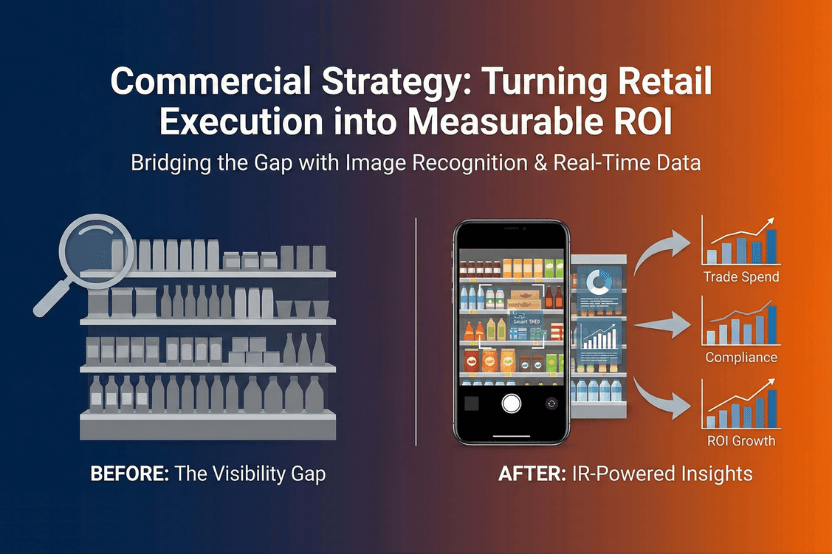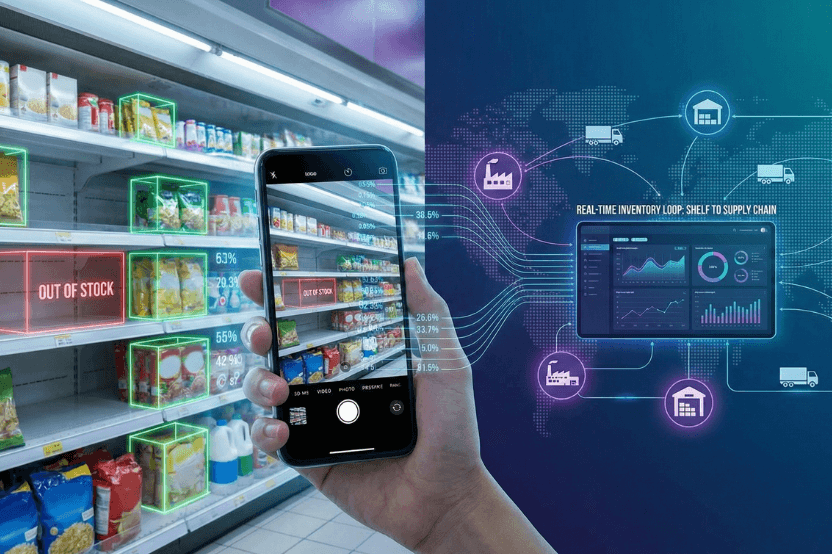Point of Purchase (POP) materials are the unsung heroes of retail, comprising promotional displays, signage, and advertising materials strategically placed within stores. They play a pivotal role in the success of retail strategies, acting as the silent influencers that guide consumer decisions and drive sales.
Yet, in today's competitive marketplace, many businesses are unwittingly leaving untapped revenue potential on the store shelves. In this article, we delve into the world of POP materials and how the integration of synthetic image recognition can revolutionise their effectiveness.
There are an array of Promotional Materials that are used in retail, these include posters, banners, displays, shelf talkers, end cap displays, sampling stations, floor graphics, window decals and more. Below are some examples:



The Current State of POP Materials
The challenges with POP materials are two-fold:
Poor visibility on POP campaigns
Field agents working on POP campaigns often find themselves trapped in a laborious, manual compliance verifying process. This involves filling out binary (Yes/No) questionnaires and physically inspecting stores to confirm the presence or absence of a POP display. After this, another agent must do a Quality Control check to verify the work of this first agent.
This inefficiency is compounded by the fact that a simple "yes" or "no" answer doesn't provide sufficient insight into the condition and performance of the POP campaign. This brings us to the second major issue.
Poor ROI due to limited insights
When consumer packaged goods (CPG) companies invest significant resources into POP campaigns, receiving only binary feedback – the display was or wasn't there – is far from satisfactory. This incomplete data leaves them in the dark about what is happening in the store. Vital questions remain unanswered: Is the shelf stocked appropriately? Are the displays in the right condition? Are the POP materials positioned correctly next to the relevant SKUs?
This lack of detailed insights hinders CPGs from making informed decisions about their next steps. For example:
- Which POP materials are driving the most sales, and why?
- Is the POP campaign effective?
- Is the POP display effective?
- Should they consider changing the placement of their products near POP displays?
If they don’t then essentially their POP campaigns will become increasingly inadequate. To the point where it becomes a major weakness, preventing them from keeping up with, let alone outperforming their competitors.
The Role of Synthetic Image Recognition (SIR)
SIR’s main role is to extract insights and provide a high level of visibility into POP campaigns. In addition to this, it has three other important functions.
Actionable insights
SIR provides insights that don’t require human validation in the form of Quality Control. The insights are produced through the validation of product and shelf images.
Ease of Use
Implementing SIR is a straightforward process. For POP materials, all that's required is a PDF or reference image. Alternatively, ZIA Capture, our onboarding app, can be utilised if new POP displays are detected without available PDFs or images. Once the initial setup is complete (this usually takes a day), the system runs autonomously. No human intervention is necessary.
Scalability
Our technology is designed to accommodate large-scale operations. Some of our clients onboard and audit more than 700 POP displays every month. About half of these change on a monthly basis. The total number of images runs into the millions each month.

ChatCPG makes managing POP materials easy
Investing in data and insight acquisition is great, but how do you go about accurately understanding the data? Do you use a dashboard? Maybe you’re spread thinly across static spreadsheets. A combination of both? All of these options are holding you back from getting the insights you need.
Meet ChatCPG, your AI Retail Execution assistant, or your AI Data Science Assistant.
When your image recognition data is collected with our synthetic IR technology, ZIA (Zero Image Annotations), ChatCPG reads and interprets this data so you can ask it any REX question. Think of it as Alexa, Siri or Google Assistant, but specifically for your retail execution operations.
You can ask it questions in natural language such as:
- "Do the POP displays for Nestle products in London Tesco stores have the correct pricing?"
- "Is there any damage to our POP materials in any Albert Heijn stores in the Netherlands?"
- "What are the SKUs next to our POP displays in Oxford Street Selfridges?"
And receive accurate responses in seconds, eliminating the need for complex dashboards or raw data analysis. Plus, it minimises the need for additional human involvement, providing instant insights into your retail execution, making it as simple as ordering an Uber.

Ensure that your POP materials not only grab attention but also lead to purchases
The integration of synthetic image recognition technology holds the key to unlocking the full potential of your POP materials. By streamlining the auditing process and providing detailed insights, businesses can make data-driven decisions that enhance the effectiveness of their retail execution strategies, ultimately boosting their competitive edge in the market.
Don't miss out on the opportunity to revolutionise your POP campaigns; embrace the power of synthetic image recognition today and schedule your free demo.

At Neurolabs, we are revolutionising in-store retail performance with our advanced image recognition technology, ZIA. Our cutting-edge technology enables retailers, field marketing agencies and CPG brands to optimise store execution, enhance the customer experience, and boost revenue as we build the most comprehensive 3D asset library for product recognition in the CPG industry.




